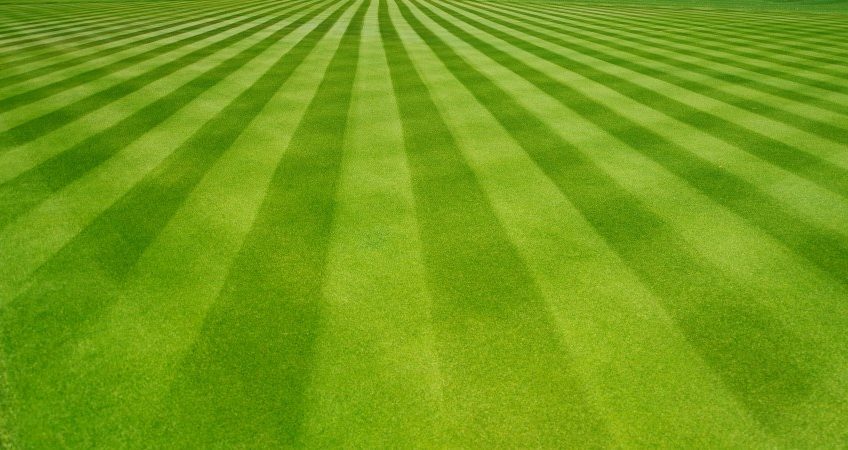Do you envy the clean stripes and patterns of a professional baseball field and wish you could replicate it at home? It’s actually not so hard. You can achieve the same striped look in your own yard with the right equipment, a little work and some healthy cool season grass.
Here are a few pro striping tips to keep in mind:
Your stripes will only be as good as the grass on your lawn.
Before we can talk about striping, you should first consider the type of grass growing in your lawn, because some grasses will “stripe” easier than others. In New England, resilient cool season grasses, such as Bluegrass, Ryegrass, Bentgrass and Fescue, produce the best results.
Beyond having the right grass, you also need a healthy lawn, and that starts with proper care. This means you should get in the habit of watering your lawn frequently, and remember to treat your lawn with quality fertilizer or all season lawn food.
Contrary to what you may think, mowing stripes into your lawn actually promotes healthy grass growth. But, you should change your mowing patterns or alternate the mowing direction every two to three weeks. Mowing too frequently in the same direction can cause the taller blades of grass to cover the shorter blades from the sun and eventually produce dead patches in your lawn. Repeatedly mowing the same pattern can also leave you with unsightly tire marks.
You need the right equipment.
In order to get a striping effect, you are going to have better chances of striping if you have a lawn mower that’s equipped with a full-width roller mounted at the rear of the mower deck (or a similar device). This roller bends the grass blades down in the direction you are mowing. Even if your mower doesn’t come with a roller, separate attachments are available that are relatively inexpensive and easy to assemble.
Those light and dark lawn stripes that grace professional baseball fields are created by the sunlight as it reflects off the grass. Stripes coming toward you appear darker, while the stripes mowed away from you will appear lighter. You can see some of the same effect with normal mowing, creating stripes with a roller just makes the effect more intense.
You also need to make sure the mower blades you are using are very sharp so you get a clean cut. Blunted blades will not give you the desired effect and can eventually tear out the grass in your lawn.
Have a plan of action in place.
Before you start mowing, decide which pattern you want to create. The sky’s the limit when it comes to striping patterns, but some popular options include: straight lines, waves, checkerboard grass patterns, zig-zags, diamonds and circles. If you are making a pattern for the first time then it’s a good idea to make a sketch of how the pattern will fit the layout of your lawn. Don’t forget to consider the shape of your lawn and any obstructions like trees, stones, a pathway. You should also keep in mind the viewpoint of your design, such as a sidewalk, driveway, or the street. Just be prepared to experiment a bit before you get the look you want.
Cut your grass high.
If you want to create an eye-catching pattern, you need to mow your grass high. Never cut more than one-third of the height of your grass at each mowing session. Mowing at a high setting will give you softer grass that bends over easily. A shorter blade of grass will not bend over as far, and the pattern will not be as noticeable- even a slight change in mowing height can make a big difference.
Some Additional Pro Striping Tips:
Unless you are creating a wavy or circular pattern, you need to make sure you are mowing in a straight line. The first stripe is particularly important since everything that follows is based in its position. Start by mowing parallel to a straight sidewalk or a driveway. If that’s not an option, then you can use a piece of string to guide you. To maintain a straight line as you mow, you should aim for an object or location that’s at least ten feet in front of you.
When you come to the end of a stripe, make sure to lift the mower deck as you turn before mowing in the opposite direction. Making sudden, sharp turns can tear out your grass. Instead, you want to mow in slow “Y” turns. You should also make sure your mower is lined up well before starting the next row. Once you’ve finished mowing your lawn, you can go over your grass pattern with the roller to clean up and smooth out the lines. You can also create a border to give it a more finished look.
In the end, your lawn will make you the envy of the neighborhood.

